
Find the Cheap Fengyang Hotels
Enter your dates for the latest hotel rates and availability.
Swipe up to view more
Filter by:
Hotel Star Rating
≤2345
Popular Filters
Amazing 4.5+Great 4.0+Good 3.5+Pleasant 3.0+We found 101 hotels for you in Fengyang
Choose your travel dates to see the latest prices and deals.
Most Booked
Lowest Price
Closest to Downtown
Highest Rated
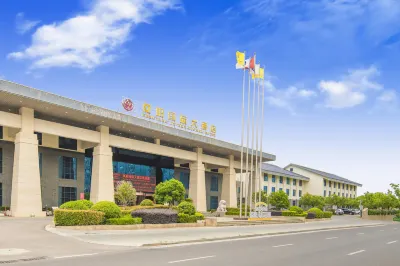


Hotel near Fengyang
GGuest User 2024.07.02
The hotel service is efficient, the staff is very enthusiastic, the check-in and check-out procedures are fast, and they can quickly respond to the needs of the guests and solve the problem. The room was clean and tidy and cost-effective. Worth staying! Push! ! !
Outstanding
393 reviews
4.6/5
Price from
NZD 41
per night
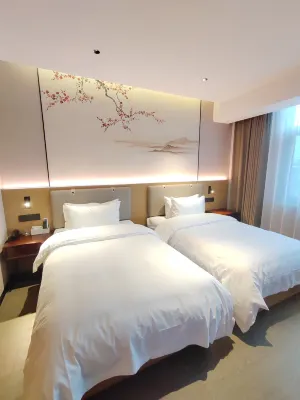


Hotel near Fengyang
AAnonymous User 2024.03.13
The room was clean and comfortable. Parking is very convenient. There is also a laundry room. Very nice, after washing the clothes, the front desk lady also helped to dry them.
Outstanding
18 reviews
4.8/5
Price from
NZD 34
per night

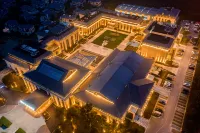

Hotel near Fengyang
GGuoyuanlili 2024.07.29
This should be a better hotel in Fengyang. The courtyard structure is that the hotel building is surrounded. My friend and I have the same room type. We are arranged in the main building. The friend's house is arranged in another building. However, we are temporarily settled. We have not asked for adjustment. We are not sure if it is because the room is full or the front desk does not realize (we are indeed booked separately, But I stayed at 7/8 hotels and homestays along the way. I basically knew that we were together when I checked in, and I would take the initiative to help us adjust it closer).
The room is very large, especially the washing area, one side is the bathtub, the other side is the toilet and shower, and the middle is two sinks. But there is no door from the room to the washing area. The shower and toilet are completely transparent glass partitions. Our family is just fine. If you are with friends, it may be embarrassing. The hotel air conditioner is really not strong, the room window is very large and transparent, and it is also very dry. The temperature has not dropped after blowing for an hour. Then we have to go to dinner and find that the default is given a room card. Take the air conditioner and stop. Can go to the front desk and ask for another plug.
The hotel breakfast is quite satisfactory. In a room outside the main building, there is a freshly ground coffee praise!
The laundry room was opposite the breakfast. My friend went to wash the clothes and said that the equipment should not be commercial and there were very few, but you can stay and let the staff wash and dry before picking it up.
Close to the hotel, there is a farmhouse that is very good, the location is very remote, but the yard is well arranged, and there are peacocks and pigs.
Outstanding
1400 reviews
4.7/5
Price from
NZD 43
per night

You Might Like
Hotels With BreakfastHotels With Twin RoomHotels With 1 Double BedHotels With Swimming PoolHotels With Free Cancellation
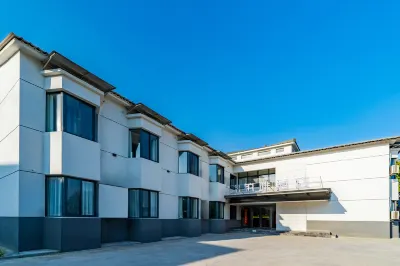


Hotel near Fengyang
GGuest User 2024.09.22
The hotel gives me a feeling of home, the service is very thoughtful, the work team has a high sense of service, the health is very good, the cleanliness of the rooms is also amazing, the bedding is soft and comfortable, the hotel's dining is also very in place, the breakfast is very rich, and the service staff are very quick. Guests in the hotel also have free parking service, the overall feeling is comfortable and comfortable, next time you will choose James Joyce Coffetel ~
Outstanding
153 reviews
4.7/5
Price from
NZD 45
per night
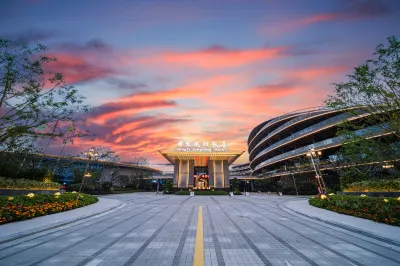


Hotel near Fengyang
ZZhuzhudelvxing 2024.09.04
來這裏旅遊,看到新開的這家酒店,先預訂了兩晚,入住體驗非常好,設施完善且有品質,人員也熱情,美中不足的是夜班沒有客房服務人員了,估計是酒店新開業的原因吧,再一個就是衞生間與淋浴房是透明玻璃隔斷,讓一家人有些不太方便,畢竟孩子大了,男孩女孩需要避諱了
環境:非常好
設施:非常好
Perfect
431 reviews
4.9/5
Price from
NZD 54
per night
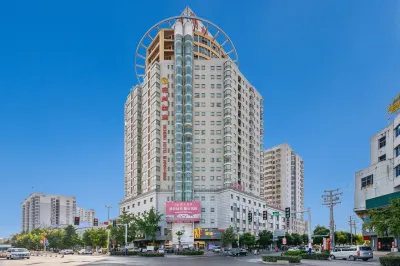
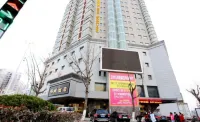

Hotel near Fengyang
HHexiangzi 2024.02.18
The hotel is very close to the downtown area of Fengyang City. It is very convenient to go shopping for the New Year. It is close to Longxing Temple.
The security guards at the door and the staff are very good.
Hotel price concessions, two large and two small booked two rooms, the room is large, the facilities are good, it is a bit old.
Although the breakfast is not rich, it is very conscience to consider the price factor.
Very Good
622 reviews
4.2/5
Price from
NZD 26
per night



Hotel near Fengyang
GGuest User 2023.05.30
The choice for business trips here, the health is not bad, the furniture facilities are a bit old, no breakfast, so no evaluation, check-out time rigidly stipulates before 12 o'clock, otherwise the room fee will be charged. This clause has not been encountered for a long time.
The restaurant next door to the hotel is very good, good quality and cheap, very recommended!
Excellent
139 reviews
4.3/5
Price from
NZD 31
per night
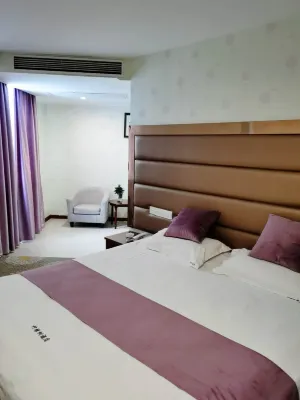
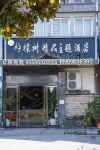
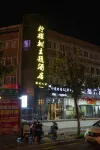
Hotel near Fengyang
2022.03.30
They are all very good, the only thing that is a little bit of is that the sound insulation is not very good 👀
Very Good
44 reviews
4.1/5
Price from
NZD 28
per night
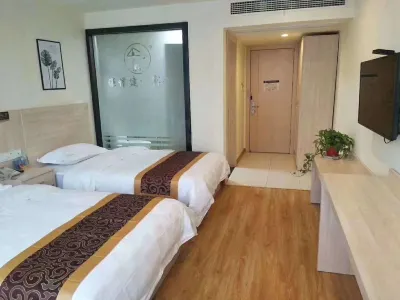
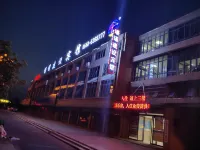

Hotel near Fengyang
GGuest User 2022.10.05
The environment is very good
Excellent
9 reviews
4.5/5
Price from
NZD 17
per night
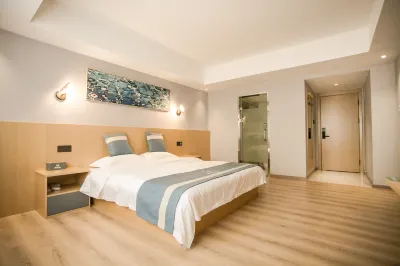

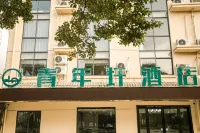
Hotel near Fengyang
GGuest User 2024.07.19
1. Quality of service: The staff at the hotel are very friendly and professional. They are always helpful and make sure our needs are met. I was impressed by the attitude of the front desk staff especially at check-in.
2. Facilities: The hotel's facilities are complete and modern. The rooms are spacious and bright, the bedding is comfortable, and the bathroom supplies are high-end. In addition, the hotel also provides leisure facilities such as gym and swimming pool, which let us relax during the trip.
3. Environment: the surrounding natural landscape and green belt make people feel relaxed and happy.
Outstanding
239 reviews
4.7/5
Price from
NZD 31
per night
Top hotel picks in Fengyang
See all
Check out these top-booked hotels from the past 30 days!
No.1
4.2/5
49 reviewMingdu Junyue Business Hotel
Hotel near Fengyang
"Great stay!""Clean and tidy"
Select dates to view pricesNo.2
4.6/5
0 reviewFengyang Warner Business Hotel
Hotel near Fengyang
"Good Location"
Select dates to view pricesNo.3
4.1/5
44 reviewCangzhou Lemon Tree Boutique Theme Hotel
Hotel near Fengyang
"Great stay!""Great service"
Select dates to view pricesNo.4
1.3/5
3 reviewFengyang Shuyue Platinum Hotel
Hotel near Fengyang
"Good Location"
Select dates to view pricesNo.5
3.8/5
18 reviewqianbulang hotel
Hotel near Fengyang
"Good Location"
Select dates to view pricesNo.6
4.5/5
9 reviewFengyang Qianzhen Construction Hotel
Hotel near Fengyang
"Good Location"
Select dates to view pricesNo.7
4.6/5
58 reviewRoyal House Boutique Hotel
Hotel near Fengyang
"Clean and tidy""Great stay!"
Select dates to view pricesNo.8
3.1/5
1 reviewFengyang Yihua Business Hotel
Hotel near Fengyang
"Good Location"
Select dates to view pricesNo.9
4.8/5
3 reviewFengyang Sijixiang Business Hotel
Hotel near Fengyang
"Good Location"
Select dates to view pricesNo.10
4.4/5
115 reviewBari Hotel
Hotel near Fengyang
"Clean and tidy""Great stay!"
Select dates to view pricesHotels with tasty breakfast in Fengyang
See all
Start your day with a tasty breakfast at one of our favourite hotels in Fengyang.
0.0/5
Price per night from: NZD 22
Fengyang Zhongdu Business Hotel
Hotel near Fengyang
The Fengyang Zhongdu Business Hotel provides a great place for travelers to relax after a busy day. Visitors to Fengyang will find that the Fengyang Zhongdu Business Hotel is a fantastic accommodation choice. Fengyang Railway Station is located approximately 10km away from this hotel. The nearby area boasts an abundance of attractions including Zhuyuanzhang Memorial Hall, Longxing Temple and Gu HuaPuLang. After a long day of sightseeing, guests can retire to the comfort of the hotel. This Fengyang hotel provides parking on site.
4.0/5
Very Good68 reviewPrice per night from: NZD 24
Mlan Hotel
Hotel near Fengyang
The Mlan Hotel is an ideal spot for travelers wanting to discover the city. Visitors to Fengyang will find that the Mlan Hotel is a fantastic accommodation choice. From the hotel, Fengyang Railway Station is just 10km away. This hotel is located near many of Fengyang's attractions including Gu HuaPuLang, Zhuyuanzhang Memorial Hall and Longxing Temple. After a long day of sightseeing, guests can retire to the comfort of the hotel. Guests of this Fengyang hotel can make use of the parking facilities. This hotel is a popular accommodation for guests traveling for business.
4.3/5
Excellent128 reviewPrice per night from: NZD 25
5.0/5
Perfect2 reviewPrice per night from: NZD 40
GreenTree Inn Anhui Chuzhou Fengyang Huangcheng Business Hotel
Hotel near Fengyang
The GreenTree Inn Anhui Chuzhou Fengyang Huangcheng Business Hotel is an ideal spot for travelers wanting to discover the city. Visitors to Fengyang will find that the GreenTree Inn Anhui Chuzhou Fengyang Huangcheng Business Hotel is a fantastic accommodation choice. The hotel is just 9km away from Fengyang Railway Station. Seeing Fengyang's sights from this hotel is easy with Gu HuaPuLang, Mingzhong Capital Imperial City Ruins and Zhuyuanzhang Memorial Hall all close by. In their spare time, guests can explore the hotel's surroundings. For those driving themselves, parking is provided on site. According to our guests, this hotel provides a very high level of service. This hotel is a popular accommodation for guests traveling for business.
4.7/5
Outstanding537 reviewPrice per night from: NZD 28
Fengyang Huamao Hotel
Hotel near Fengyang
The Fengyang Huamao Hotel is an ideal spot for travelers wanting to discover the city. The Fengyang Huamao Hotel is an ideal choice for travelers who want to take in the sights and sounds of Fengyang. Fengyang Railway Station is located approximately 9km away from this hotel. This hotel is located near many of Fengyang's attractions including Gu HuaPuLang, Zhongdu of Ming Dynasty Imperial City and Stone Sculptures of Royal Tombs and Zhuyuanzhang Memorial Hall. At the end of a busy day, travelers can unwind and relax in the hotel or go out and enjoy the city.
4.0/5
Very Good21 reviewPrice per night from: NZD 20
qingnian hotel
Hotel near Fengyang
Opened in 2021, the qingnian hotel offers travelers a pleasant stay in Fengyang, whether for business or leisure purposes. The hotel offers easy access to Fengyang Railway Station, just 11km away. Seeing Fengyang's sights from this hotel is easy with Gu HuaPuLang, Mingzhongdou Xihuamen Ruins and Zhongdu of Ming Dynasty Imperial City and Stone Sculptures of Royal Tombs all close by. At the end of a busy day, travelers can unwind and relax in the hotel or go out and enjoy the city. According to our trusted guests, the facilities at this hotel are first-rate. Perfect for those working on the move, this hotel caters to a large number of business guests.
4.7/5
Outstanding239 reviewPrice per night from: NZD 31
Fengyang Xiuse Boutique Theme Hotel
Hotel near Fengyang
The Fengyang Xiuse Boutique Theme Hotel is an ideal spot for travelers wanting to discover the city. The Fengyang Xiuse Boutique Theme Hotel offers a pleasant stay in Fengyang for those traveling for business or leisure. From the hotel, Fengyang Railway Station is just 9km away. There is no shortage of things to see in the area, with the Zhongdu of Ming Dynasty Imperial City and Stone Sculptures of Royal Tombs, Longxing Temple and Mingzhong Capital Imperial City Ruins all nearby. At the end of a busy day, travelers can unwind and relax in the hotel or go out and enjoy the city. This Fengyang hotel features parking on site. Our guests consider this hotel to have excellent service.
4.0/5
Very Good26 reviewPrice per night from: NZD 21
Latest Reviews for Fengyang hotels
See all
Explore genuine reviews and ratings from real travellers to find the perfect accommodation for your needs.
5.0/5
Perfect
GGuest User酒店很新,坐落在縣道上,離高速出口兩公里左右,早餐是免費的,能吃飽。離鳳陽縣城開車需要半個多小時。周邊購物不方便。
4.5/5
Excellent
GGuest UserGood, clean and hygienic. The room is also very spacious. Parking is very convenient. The room is relatively quiet. . The waiter's attitude is also very good. Praise.
4.4/5
Excellent
XXingge設施:設施比較齊全,比較全面的,
衞生:衞生比較乾淨衞生比較乾淨的。
環境:環境也比較好的,附近美食比較多,吃飯也比較方便。
服務:服務比較好。
4.0/5
Very Good
WWuhufangtehuanleshijieNot bad, the floor tiles in some rooms are not good hahahaha, I hope it can be improved
3.1/5
GGuest UserBasically in line with the price value
2.0/5
GGuest UserVery good, the environment is good
1.9/5
住宿環境非常好,前台小姐姐也很客氣。還會在來。
What travellers say about Fengyang attractions
Discover these places worth visiting in Fengyang and select a hotel nearby for ultimate convenience
Ming Zhongdu Drum Tower
闲闲来有趣As an emperor of poor origin, the seeds of wealth and officials planted in Zhu Yuanxuan's early years were fully revealed when he could manipulate others to live and kill, which made his politics show the characteristics of being harsh and relatively liberal to the officials and civilians. Although he must bear the notoriety for strengthening authoritarian rule and control of literati culture, he has achieved good results in improving people's livelihood.
Xiaogang Village
哈哈哈岛张易之Today, Xiaogang Village has one thousand farm parks for people to visit. It was a model village back then. But it still has a strong rural warmth that reminds people of that good time.
Fengyang Royal Mausoleum of the Ming Dynasty
AAnonymous UserIn addition to the Thirteen Tombs of the Ming Dynasty, there are 5 imperial mausoleums of the Ming Dynasty, namely: Xiaoling Mausoleum in Nanjing, which is the mausoleum of Zhu Yuanzhang, the founder of the Ming Dynasty; Imperial Mausoleum in Fengyang, Anhui, which is the mausoleum of Zhu Yuanzhang’s parents; and the Mausoleum in Xuyi, Jiangsu The Ancestral Mausoleum is the mausoleum of Zhu Yuanzhang's grandparents, great-grandparents, and great-great-grandparents; the Xianling Mausoleum in Zhongxiang, Hubei Province is the mausoleum of Emperor Shizong Zhu Houcong's parents; and the Jingtai Imperial Mausoleum in Jinshan, Beijing.
Fengyang Minghuang Mausoleum is the ancestral mausoleum built by Zhu Yuanzhang, the founding emperor of the Ming Dynasty, for his parents. It has three sets of city layout and 14 kilometers of square gardens. There are 32 pairs of stone statues, which are the largest in the country and the highest standard. Zhu Zhang was born in poverty and had been herding sheep since he was a child. In the year of the great disaster, his parents, brothers, sisters-in-law and nephews all starved to death and were buried without land. He asked the landlord for land but was refused, so he could only be buried hastily on a straw mat on the wasteland. Zhu Wei could only survive as a monk at Yuhuang Temple (today's Longxing Temple). Later, the temple could no longer support people, so he was sent out to beg for alms. He couldn't survive anymore. Zhu joined Guo Ziyi's peasant uprising army in the late Ming Dynasty. , was reused for her outstanding performance and became Queen Wu. Zhu Niannian couldn't forget the grass burial of his parents, so he started to build the tomb, first planning to move the ground. Liu Bowen, the adviser, saw the tomb and thought it had dragon veins and was a land of dragon prosperity. He advised Zhu not to move the tomb, which would affect the descendants of the Zhu family. Zhu adopted Liu's suggestion and thought it was a geomantic treasure and decided to rebuild it on the spot. Until Zhu made his capital in Nanjing and became the emperor of the Ming Dynasty, he practiced it for thirteen years. It was grand in scale and of the highest standard. On the one hand, it expressed the kindness to his parents in raising him, and on the other hand, he returned home in fine clothes. He also required his descendants to return home often to worship their ancestors. Visit the grave.
The Ming Emperor's Mausoleum was specially maintained and protected during the Ming Dynasty, and its grandeur was unprecedented. The society was in chaos at the end of the Ming Dynasty, and it began to decline. In particular, Zhang Xianzhong, a peasant uprising general, deliberately destroyed the imperial mausoleum in order to destroy Zhu Jiayuan's atmosphere and feng shui. The remaining ancient city walls were stripped and demolished, houses were built, pig pens were built, and cemeteries were farmed for grazing. The Cultural Revolution destroyed the Four Olds and caused serious damage to historical sites and cultural relics.
After the Third Plenary Session of the Central Committee of the Communist Party of China, the chaos was brought to an end, Chinese cultural relics were valued and protected, vitality was restored, and traditional culture was passed on. Fengyang Ming Emperor's Mausoleum has restored its former scale. The stone statues, the stone tablets inscribed by Zhu Yuanzhang's imperial pen, the wordless tablets, and the sleeping companions have all survived. They have become important physical evidence for understanding and studying the history of the Ming Dynasty and the physical objects of the funeral system of the Ming Dynasty. It is a leisure place for the people. Important places to visit.
Langxiangmi Valley
温温火烧冰Basically, you can only drive there. The parking fee is 5 yuan per time. There is a Jingjiao car from the ticket gate to the ticket gate. 18 round trips, and you can walk about 3 kilometers by yourself. There is a section of mountain road into a cave and Jingjiao car, 10 yuan a time, walk 10-15 minutes. Officially entering the Miguchi can come out in about 20 minutes, and then walk downhill to get out of the scenic spot. There are not many people in the scenic area, and the price is average.
Jiushan Cave
1186***89It is very convenient to buy, and there are discounts, which is more convenient. Just swipe the code directly on the spot, easy to use. Next time I will buy a ticket in Trip.com . It is an old customer of Trip.com . Every time I go out to play, I book a hotel in Trip.com . I have very few tickets. This experience is very good. I can use this to buy it in the future. It is much more convenient than buying on site. It is recommended. Awesome!
Fengyang Museum
愚愚公移山68It is worth visiting the county-level museum, because of the rich cultural heritage and long history, plus the Ming Dynasty Emperor Zhu Yuanzhang in the hometown construction, there are a lot of cultural relics left.
Mingzhong Capital Imperial City Ruins
风风雨做的梦想曲会差The site is very large and well maintained. Xihuamen and Wumen are best preserved, and they can also make people feel the strong sense of historical vicissitudes. Maybe the geography is too difficult to develop. Finally, Zhu Yuanxuan stopped the construction of Zhongdu, but the two Kings City are all based on Fengyang Zhongdu as a template. The historical significance is still great!
FAQs About Hotels in Fengyang
What popular hotels in Fengyang have parking?
If you're planning on driving to Fengyang, why not stay at
Rock E-sports Hotel,Junyi Hotel Chain (Chuzhou Fengyang Zhongdu Chenghuang Temple Branch)andGreenTree Inn Anhui Chuzhou Fengyang Huangcheng Business Hotel
? These are all popular hotels with parking lots.At which popular hotels in Fengyang can I try local foods?
Those who like trying local foods might want to consider staying at
Fengyang International Hotel,GreenTree Inn Anhui Chuzhou Fengyang Huangcheng Business HotelandMingdu Junyue Business Hotel
. There are lots of famous restaurants serving local dishes near these hotels.When travelling to Fengyang, which hotels have pools?
Summer is a great season to take your kids or family on a trip to Fengyang.
Fengyang International Hotel
is a popular hotel with a pool.Of all the hotels in Fengyang, which hotels have the highest user ratings?
When travelling to Fengyang for the first time, many travellers find it difficult to choose a hotel to stay in. According to Trip.com data,
Fengyang International Hotel, Fengyang Xiuse Boutique Theme Hotel and Royal House Boutique Hotel
are popular hotels with high ratings, making them good choices for your trip.At what hotels in Fengyang can I try local breakfast foods?
A delicious breakfast is a great way to kick start your day. At
Fengyang Xiuse Boutique Theme Hotel,Fengyang International HotelandDicheng Hotel (Fengyang Institute of Technology Bus Station Branch)
, guests can enjoy Fengyang-style breakfasts.What popular hotels have non-smoking rooms in Fengyang?
Many guests care about the quality of the rooms they stay in and want to ensure that their rooms have fresh, clean air.
Fengyang Zhongdu Business Hotel,Fengyang Kaiyuan Mingting HotelandFengyang International Hotel
are all popular hotels in Fengyang with non-smoking rooms.In Fengyang, what popular hotels have free Wi-Fi?
When staying at a hotel, Internet access is important for both vacationers and business travellers.
GreenTree Inn Anhui Chuzhou Fengyang Huangcheng Business Hotel, Mingdu Junyue Business Hotel and Fengyang Kaiyuan Mingting Hotel
are all popular hotels in Fengyang with free Wi-Fi.What are the most popular hotels in Fengyang?
Whether you're travelling for business or going on holiday, there are many popular hotels to choose from in Fengyang.
GreenTree Inn Anhui Chuzhou Fengyang Huangcheng Business Hotel, Dicheng Hotel (Fengyang Institute of Technology Bus Station Branch) and Fengyang Kaiyuan Mingting Hotel
are all popular hotels to stay at.What are some popular discounted hotels in Fengyang?
There are many popular hotels in Fengyang. You can find information on discounts and deals here: Trip.com Deals and Promo Codes.In Fengyang, which popular hotels have gyms?
Based on Trip.com user ratings,
Fengyang Kaiyuan Mingting Hotel
is a highly rated hotel with a gym.Local Travel Info
| Highest Price | NZD 162 |
|---|---|
| Lowest Price | NZD 11 |
| Number of Reviews | 6,633 |
| Number of Hotels | 211 |
| Average Price (Weekdays) | NZD 37 |
| Average Price (Weekends) | NZD 37 |